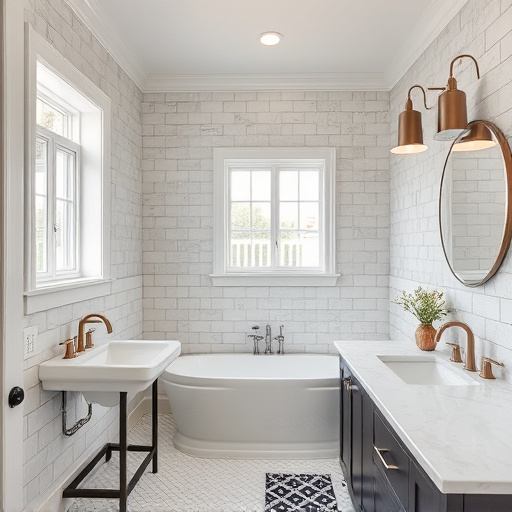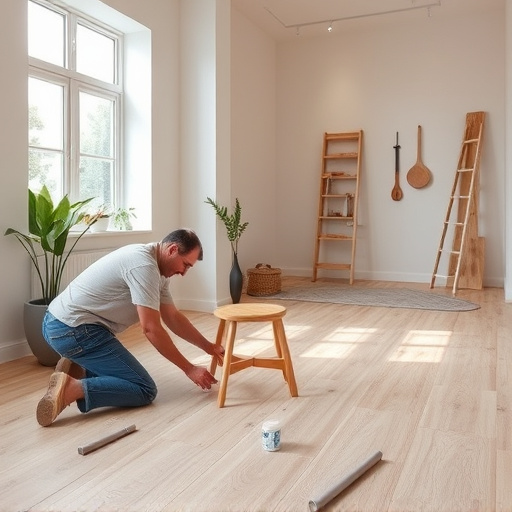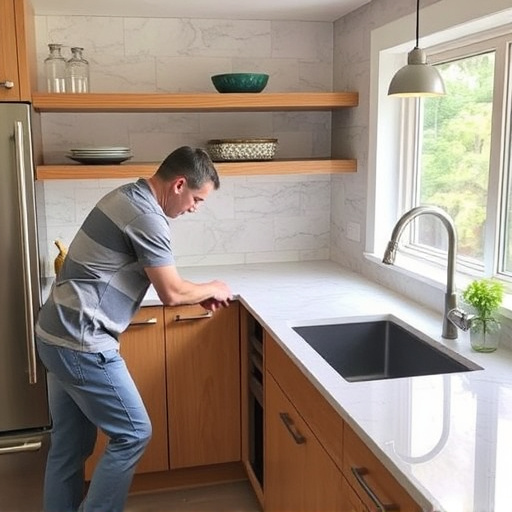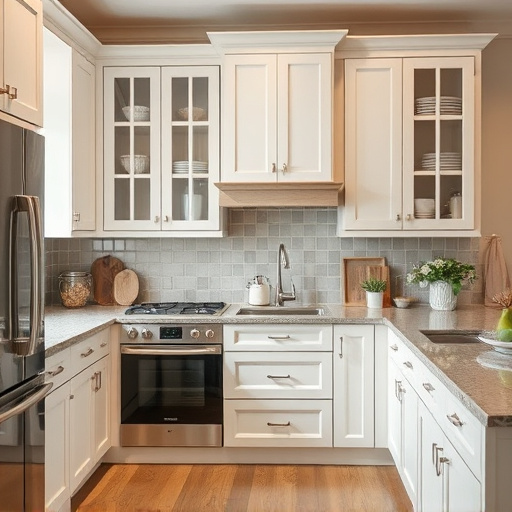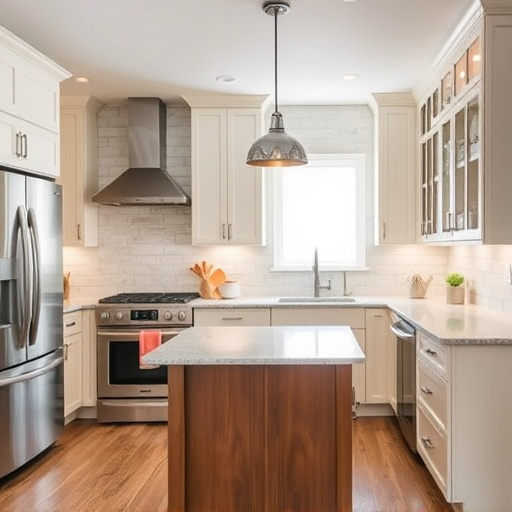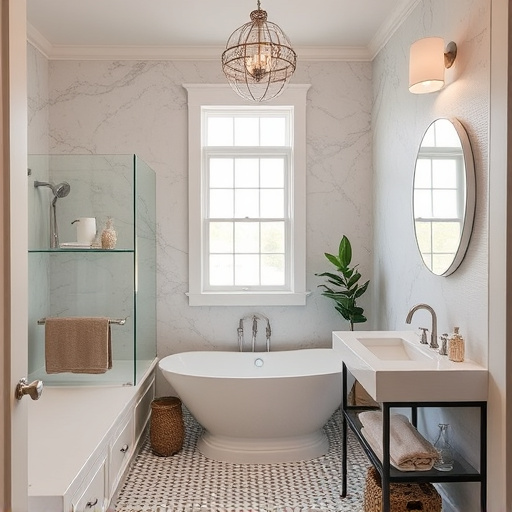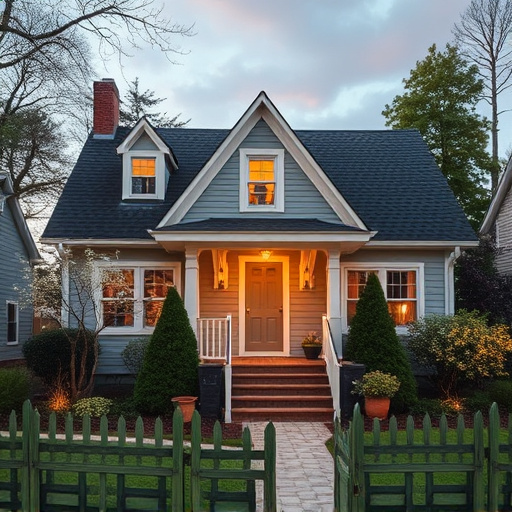Before flooring replacement, assess floor type and protect baseboards by clearing furniture, taping off edges, and using water-resistant tape for moisture areas. Remove old flooring carefully, inspect subfloor, and cut new flooring precisely alongside baseboards for a seamless transition during multiple room remodels.
Looking to refresh your space with new flooring but worried about damaging baseboards? Don’t be! This guide walks you through the process of replacing flooring without compromising your baseboards. We’ll show you how to assess your floor type, safely remove old flooring, and meticulously install new flooring alongside these delicate trim pieces. Discover expert tips and tricks for a seamless flooring replacement project.
- Assess Floor Type and Prepare Baseboards
- Remove Old Flooring Without Damage
- Install New Flooring Alongside Baseboards
Assess Floor Type and Prepare Baseboards
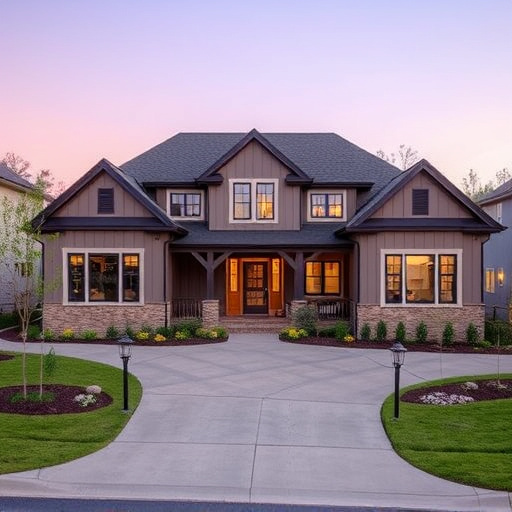
Before beginning your flooring replacement project, it’s crucial to assess the type of floor you have and prepare your baseboards accordingly. Different flooring materials require distinct approaches during installation and removal. Whether you’re dealing with hardwood, laminate, or carpet, understanding these nuances will prevent damage to your baseboards.
First, remove any furniture from the room to gain clear access to the floor. Then, tape off the baseboards with painter’s tape to protect them from debris and scratches during the process. For kitchen and bath renovations, where moisture is a concern, consider using water-resistant tape for added protection. This simple step ensures your baseboards remain intact and in excellent condition throughout the flooring replacement process, making it easier to enjoy your updated space with minimal home improvement services required afterwards.
Remove Old Flooring Without Damage
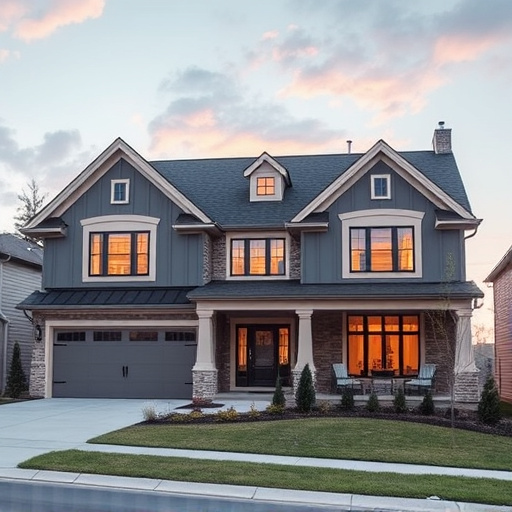
When replacing flooring, removing the old one without damaging the baseboards is a crucial step. Start by identifying the type of flooring you’re dealing with—hardwood, laminate, or carpet—as this will determine your approach. For hardwood floors, use a pry bar to lift the edges gently, working from room corners towards the center. This method reduces the risk of splitting baseboards. If removing laminate or carpet, a utility knife and a scraper can help detach the flooring from the subfloor without causing excessive wear on the baseboards.
Remember, patience is key. Take your time to avoid sudden movements that could mar the baseboards or damage the new flooring you’re about to install. Once the old flooring is removed, inspect the subfloor for any repairs needed before laying down the new material, ensuring a smooth transition into your functional spaces, whether it’s a home addition or an exterior painting project.
Install New Flooring Alongside Baseboards

When replacing flooring, one crucial step to avoid damaging baseboards is to install the new flooring alongside them. This precise method ensures a seamless transition between your floor and walls, preserving the aesthetic appeal of your home transformations. Begin by carefully measuring the area where the baseboards meet the floor, ensuring you have the correct amount of flooring material. Cut the new flooring to fit snugly along the baseboards using a utility knife or saw. This requires careful consideration for different flooring types, as some may need specialized tools or techniques.
Once cut, lay the new flooring alongside the baseboards, aligning it precisely with the existing floor and walls. This meticulous approach is key in achieving a professional look during customized home renovations. Use spacers to maintain an even gap between the new flooring and baseboards while applying adhesive according to the manufacturer’s instructions. By installing the flooring this way, you’ll avoid the common pitfalls of messy cuts or uneven floors, ensuring your multiple room remodel looks flawless.
Replacing flooring without damaging baseboards is a feasible task with careful preparation and the right techniques. By first assessing your floor type and properly preparing the baseboards, you can remove old flooring seamlessly. With precision and attention to detail during installation, new flooring can be fitted alongside baseboards, achieving a clean and professional finish. This DIY approach allows you to transform your space while preserving the integrity of your baseboards, making it an effective strategy for efficient flooring replacement.








